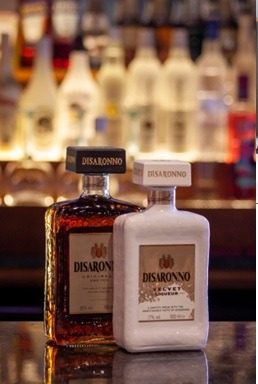Introducing the Most Famous Italian Liqueurs
When it comes to liqueurs, Italy reigns supreme. Some of the best and most unique liqueurs in the world come from a country with a long history and many local ingredients. From amaro to limoncello, there’s a liqueur for every palate and every occasion. They are certainly known for Italian wines but also much more!
In this article, we’ll tour the ten most famous Italian liqueurs and why they are so beloved. Or, if you are more interested in buying Italian liquor than reading about them, head straight to Puninwine to get the best price on a wide variety of drinks native to Italy.
A Toast to History: The Evolution of Italian Liqueurs
The art of liqueur-making in Italy dates back centuries, with monasteries and pharmacies serving as the birthplace of many traditional recipes. The use of local ingredients such as herbs, fruits, and nuts was common to create medicinal tonics and elixirs, and as trade routes expanded, these concoctions found their way into bars and homes.
During the Renaissance, liqueur-making became more of an art form, and by the 19th century, commercial production had begun. Today, liqueurs like Campari and Aperol are household names, but countless other Italian liqueurs are worth exploring.
The 10 Commandments of Italian Liqueurs
Here are the 10 best Italian liquors to try this year:
- Campari – Known for its vibrant red color and bitter-sweet taste, Campari is an essential component in many classic cocktails, such as the Negroni and Americano. Its recipe is a closely guarded secret, but it is known to include ingredients such as bitter oranges, rhubarb, and cascarilla.
- Aperol – Another aperitivo staple, Aperol is less bitter than Campari and has a brighter orange hue. Its recipe includes ingredients such as rhubarb, gentian root, and cinchona. Its signature drink is the Aperol Spritz, a refreshing blend of Aperol, Prosecco, and soda water.
- Amaro – The catch-all term for Italian bitter liqueurs, there are hundreds of varieties of amaro, each with its own unique blend of herbs and spices. Some popular types include Cynar, made with artichokes, Ramazzotti, made with over 30 different herbs, and Fernet-Branca, known for its strong menthol and medicinal notes.
- Limoncello – A lemon liqueur from the Amalfi Coast, Limoncello is typically served as a digestivo and is a refreshing end to any meal. The lemons used to make Limoncello are grown in the region and are known for their intense flavor and fragrance.
- Nocino – A walnut liqueur traditionally made in the Emilia-Romagna region, Nocino has a rich, nutty flavor and is often served neat or in coffee. The green walnuts used to make Nocino are harvested in June when they are still unripe and are infused with spices such as cinnamon and vanilla.
- Strega – A golden liqueur from Campania, Strega’s recipe includes over 70 herbs and spices and has a unique, slightly minty flavor. The herbs used to make Strega are sourced from the region and are said to include the likes of mint, fennel, and myrtle.
- Grappa – A pomace brandy typically made from the skins and seeds of grapes, Grappa is known for its strong alcohol content and is often sipped after a meal. Grappa can be made from various grape varieties and can range in flavor from floral and fruity to bold and robust.
- Sambuca – A licorice-flavored liqueur, sambuca can be enjoyed neat or with coffee beans floating in the glass (known as “con la mosca” or “with the fly”). It’s a versatile liqueur that can be enjoyed with a variety of mixers or even be added to coffee to make a Sambuca coffee
- Rosolio – A rose-petal liqueur that was popular in the 18th and 19th centuries and is making a comeback in modern mixology. The rosolio’s recipe is usually made with rose petals, jasmine, and other floral aromas, perfect for a special occasion.
- Zabov – A unique blend of chocolate and alcoholic flavors, a popular treat as a digestif in Italy. The liqueur is made with chocolate cream, cocoa, and high-quality alcohol that makes for a delicious treat, perfect for those with a sweet tooth.
Italian liqueurs have a wide range of tastes and ways to drink them, which makes them great for any event. Whether you’re looking for a bitter aperitivo or a refreshing digestivo, there’s an Italian liqueur.
The Secret Ingredients: What Makes Italian Liqueurs So Good?
Here are a few of the many factors that make Italian liqueurs so good:
Local Ingredients: From the Amalfi Coast’s lemons to the Abruzzo region’s herbs, many Italian liqueurs are made with carefully sourced, high-quality local ingredients.
Tradition: Many liqueur recipes have been passed down through generations and are steeped in history and tradition.
Attention to Detail: The production process of Italian liqueurs is usually done with meticulous care and attention to detail, ensuring that the final product is of the highest quality.
Balanced Flavors: Italian liqueurs are known for having just the right amount of bitter, sweet, and herbal tastes, which makes them easy to drink and enjoyable.
Concluding the Guide to the Best Italian Liqueurs
In conclusion, Italian liqueurs have a rich history, a delicious taste, and are versatile drinks, making them a must-try for any drink enthusiast. With a diverse range of flavors and drinking experiences, it’s easy to see why these liqueurs are loved by many. Next time you’re out for a drink, don’t be afraid to branch out and try something Italian. Believe us, you will not be disappointed.



